The distribution of glaciated areas and the animals that are STILL ALIVE today and shown in the exhibition
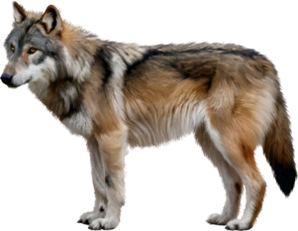
Wolf (Canis lupus)
The social behaviour of wolves is among the most developed in the animal kingdom. There is a strict hierarchical order prevailing within the pack. Individual members subordinate themselves to the interests of the community while retaining their individuality. This behaviour significantly increases the efficiency of hunting. In times of scarcity, only the males and females at the top of the hierarchy mate, while the others are excluded from reproduction. All dogs bred by humans are descendants of wolves.

Muskox (Ovibos moschatus)
When threatened, muskoxen confront all kinds of attackers and rarely flee. This behaviour has accelerated their decimation. Calves are surrounded by the herd during stormy weather and extreme cold, so the thick fur of the adults provides them with adequate protection. This large herbivore survives the Arctic winters without changing habitat. As the precipitation is weak, there is no thick snow cover, giving it constant access to food.
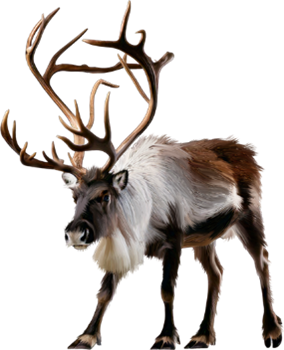
Reindeer (Rangifer tarandus)
Reindeer can be divided into three groups living in different conditions: tundra, forest, and island dwellers. Tundra dwellers migrate long distances between summer and winter pastures. Forest dwellers migrate when they have grazed off the area. Those living on islands have to make do with what their limited habitat offers. The Sami people keep them for their milk, meat, and fur. They can be trained to pull sleds and can also be ridden, just like horses.
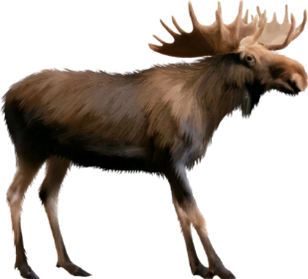
Moose (Alces alces)
Moose live alone. Females raise their calves alone. Bulls do not build harems, and even during the mating season they only stay with a cow for a short time, because as soon as she is fertilized, they look for a new partner. This is possible because cows in different areas do not come in heat at the same time. They have excellent hearing and sense of smell, but their eyesight is poor. They feed primarily near water, but during mosquito invasions they retreat to higher ground.
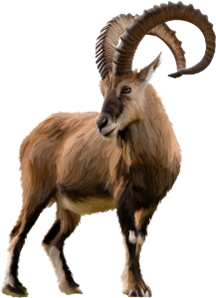
Ibex (Capra ibex)
This species is active during the day. It moves skillfully on steep high mountain pastures. In case of danger, it flees to rocky shelters, where it can move with extremely long and high jumps that surpass even those of a chamois. Even newborn goatlings follow their mothers as perfect climbers. Bucks and does travel in separate herds, and sexually mature bucks only visit does during the mating season. There is frequent turnover in the herd.
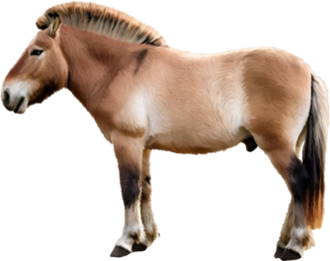
Przewalski’s horse (Equus ferus przewalskii)
Wild horses live in communities consisting of a leader, several mares and several foals. Horses are excellent runners. They are formidable opponents in battle, as their sharp, hard hooves can deliver powerful kicks and even crush a wolf’s skull. They have excellent hearing, constantly moving their ears. Their sense of smell is also excellent. They have a very wide field of vision and can detect movement from a great distance, but their close-up vision is poor.
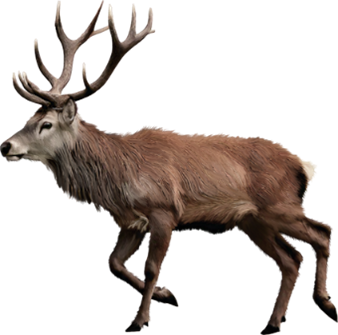
Red deer (Cervus elaphus)
Red deer rest in sheltered places during the day. They start feeding at dusk. Stags and cows live in separate groups. They like to wallow in muddy pools. When threatened, they defend themselves by stamping their front legs rapidly, and their extremely sharp hooves serve as effective weapons. Stags need a lot of calcium to grow their antlers, which they obtain primarily from their bones.

Giant armadillo (Priodontes maximus)
The most interesting part of the giant armadillo’s body is its teeth. There are 24-26 teeth on each side of the upper jaw and 22-24 on the lower jaw, making a total of 90-100 teeth. The animal loses almost all of its teeth by adulthood. It spends the daytime hiding in underground burrows. Members of a family develop from a single fertilized egg, so giant armadillo siblings are always identical twins.
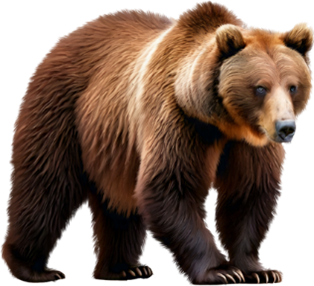
Brown bear (Ursus arctos)
The brown bear is active both during the day and at night. In winter, it prefers to den in a protected spot for a longer period, while living off of its fat reserves, but it does not hibernate. In spring, it emerges from its hiding place emaciated. Then it eats a lot of greenery to restart its digestion. The brown bear is a good and persistent swimmer and a surprisingly fast runner over short distances. It lives alone, but females raise their cubs until they are two years old. Already in prehistoric times, a significant bear cult developed, and later the animal was included in the coats of arms of different dynasties.
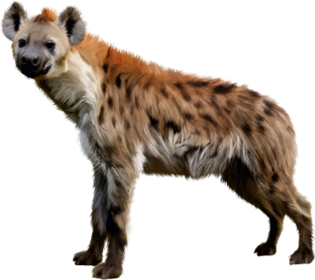
Spotted hyena (Crocuta crocuta)
The spotted hyena is one of the most muscular animal species. Its extremely powerful jaws and teeth can even crush bones into fine powder. Females are significantly more aggressive than males, partly due to their higher testosterone levels. As a consequence, their genitalia are very similar in appearance. The clitoris of females resembles the genitalia of males in both form and function, and is even capable of erection, which is why ancient cultures often considered hyenas to be hermaphrodites.

Arctic fox (Alopex lagopus)
The arctic fox usually digs a burrow on hills or rocky outcrops rising from the permanently frozen level, or dens under larger rocks. Pairs live at a sufficient distance from each other. The arctic fox can bark like a dog. It eagerly snatches anything it smells as edible, even if it cannot eat it. Its fur is predominantly brown in summer and pure white in winter. Their cheekiness makes them unwelcome around settlements.


